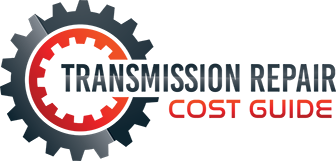The torque converter clutch/TCC is one of the most important elements in a modern automatic transmission. It makes it so the engine and transmission are spinning at the same speed, which can improve both fuel efficiency and performance. So let’s take a closer look at this modern marvel. But in order to do that, we first have to look at the torque converter itself.
What Transmission Do I Have?

How does a torque converter work?
A torque converter is essentially a clutch that separates the engine from the automatic transmission so the engine does not stall when the vehicle comes to a stop. It’s what’s known as a fluid coupling, which operates by transmitting the rotational power from the engine’s crankshaft to the drive wheels, using hydraulic pressure. It also multiplies engine torque during acceleration.
Inside every torque converter are a series of turbines, which are turned by pressurized hydraulic fluid (a.k.a. automatic transmission fluid). Each half of the torque converter has turbine fins, and there is a separate turbine wheel in the center called a stator. The drive wheels are turned by hydraulic pressure that gets transferred from one side of the torque converter turbine wheels to the other.
The impeller is directly connected to the engines crankshaft via the flywheel. The turbine is the other finned wheel connected to the transmission pump. When the engine RPM increases the speed of the impeller to a certain level (i.e. the Stall Speed), the stator will kick in and amplify the engine torque by turning the torque converter turbine with pressurized hydraulic fluid/ATF. This causes the pump to pressurize fluid inside of the transmission, thus sending engine power to the drive wheels.
The central mounted Stator acts like clutch in a manual transmission, preventing the engine from stalling when the vehicle comes to a stop, by allowing one half of the torque converter to basically freewheel.
What Transmission Do I Have?

How does a torque converter clutch work?
The torque converter is a friction lined disk that lives at the back of the torque converter. It has an integrated return spring and hydraulically controlled pistons. Whenever the TCM decides to engage the torque converter clutch, it sends an electric pulse to the TCC solenoid, which then sends pressurized transmission fluid to the TCC pistons, which move the clutch plate against the torque converter shell. This locks the entire body of the torque converter to the turbine shaft, thus creating a 1:1 mechanical connection between the engine and the transmission.
